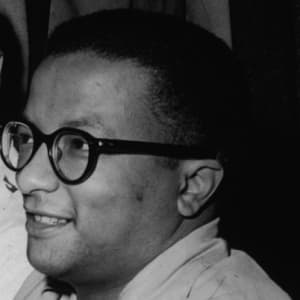
Janet Jagan
Janet Jagan co-founded the People’s Progressive Party. She was the first woman to become prime minister of Guyana and was also Guyana’s first female president.
Synopsis
Janet Jagan was born on October 20, 1920, in Chicago, Illinois. In 1950, she co-founded the People's Progressive Party. After Guyana achieved independence, she served on an election committee. In the early 1970s, she co-founded the Union of Guyanese Journalists. In 1997, she became the country's first female prime minister and president. She died on March 28, 2009, in Georgetown, Guyana.
Early Life
Born Janet Rosenberg on October 20, 1920, in Chicago, Illinois, Janet Jagan is best known for becoming the first female prime minister and president of Guyana. Raised in a middle-class Jewish family, Janet attended Wayne State University and the Cook County Nursing School. She met Cheddi Jagan, a denistry student from Guyana (known then as British Guiana), in 1942, and the couple—who shared a passion for radical politics—were married the following year.
People's Progressive Party
Moving to Guyana in 1943, Janet Jagan worked with her husband at his dental practice. The couple soon got involved in the country's labor movement. In addition to joining the British Guiana Labour Union, Jagan helped organize domestic workers with labor leader Hubert Critchlow. She also helped establish the Women's Political and Economic Organisation in 1946.
In 1950, Janet and Cheddi Jagan were instrumental in creating a the country's first modern political party, the People's Progressive Party. Janet became the organization's secretary general, a post that she would hold for nearly 20 years. One of the party's goals was to liberate of Guyana from British rule (the South American nation had been a British colony since the late 1700s). The PPP made an impressive showing at the 1953 elections, winning a majority of seats in the country's first popular vote. Cheddi was elected as chief minister, but only held his post for a short time. Fearing the PPP's Marxist leanings, the British government removed the organization from power after only 133 days. The constitution was also suspended.
Two years later, Janet and Cheddi Jagan spent time in jail as political prisoners. They were vindicated in a way by the 1957 elections, in which the Guyanese people selected Cheddi as their chief minister and Janet as their minister of labor, health and housing. While still under British control, the PPP government tried their best to improve the lives of the people. Janet Jagan worked on creating health centers and special clinics for pregnant women and children, and worked to tackle issues relating to workers' pay and treatment.
In the early 1960s, the country wrestled with political and economic turmoil. There were riots against the PPP government. The PPP also suffered from internal conflict when one of its founders, Forbes Burnham, who was of African heritage, left to form the largely black People??s National Congress. Most of the remaining members of the PPP, including Cheddi Jagan, were East Indian descendants. Over the years, supporters of both parties engaged in a number of violent clashes.
The situation got so bad in the early 1960s that the Jagans decided to send their daughter, Nadira, to live abroad for a time, while they remained committed to their work. Janet became the minister of home affairs in 1963, but she gave up the post in protest a year later. In 1966, Guyana achieved independence from Great Britain, but in the following years, there were concerns about the fairness of elections held in the country. Jagan served on an election committee in 1967 and complained about the possible rigging of elections. Around the same time, Jagan became an official citizen of Guyana. She had lost her U.S. citizenship in the 1940s due to her Marxist beliefs.
In the early 1970s, Janet Jagan became editor of the Mirror newspaper, which was published by the PPP. She also co-founded the Union of Guyanese Journalists around the same time. Always committed to public service, Jagan became an opposition member of Parliament in 1973, and was re-elected to her post in 1980 and 1985.
Guyana held its first truly free elections in almost three decades in 1992. As a result, Cheddi Jagan became the country's new executive president. As first lady of Guyana, Janet Jagan held several special positions. She spent several months as the country's ambassador to the United Nations in 1993, and chaired the National Commission on the Rights of the Child.
After her husband's death in March 1997, Janet Jagan became the country's first female prime minister and first vice president. She also became the PPP's candidate for the elections, which were held in December 1997. After winning the election, Jagan became the first female president of Guyana. That same year, she won the Gandhi Gold Medal for Peace, Democracy and Women's Rights from the United Nations Educational, Scientific and Cultural Organization. While she was forced to resign in 1999 for health reasons, Jagan remained an active member of the PPP for nearly another decade thereafter.
Final Years
Jagan wrote several children's books in her later years, including Dog Who Loved Flowers (2000), Alligator Ferry Service and Other Stories from Guyana (2001) and Lure of the Mermaid and Other Children??s Stories (2002). She also contributed articles to the Mirror newspaper.
Jagan had two children, Cheddi Jr. and Nadira, and five grandchildren. She died on March 28, 2009, in Georgetown, Guyana.




